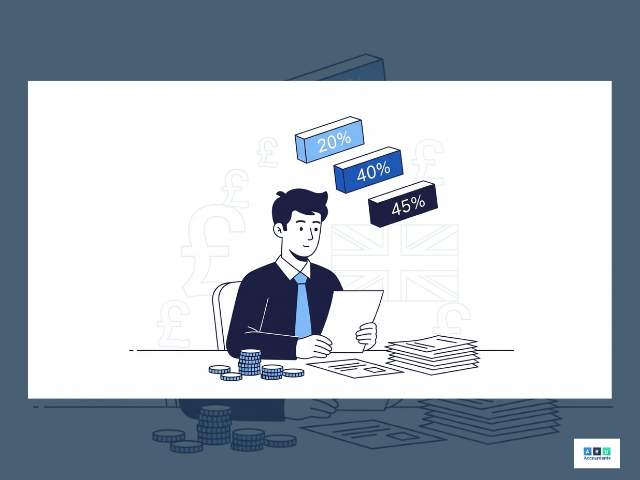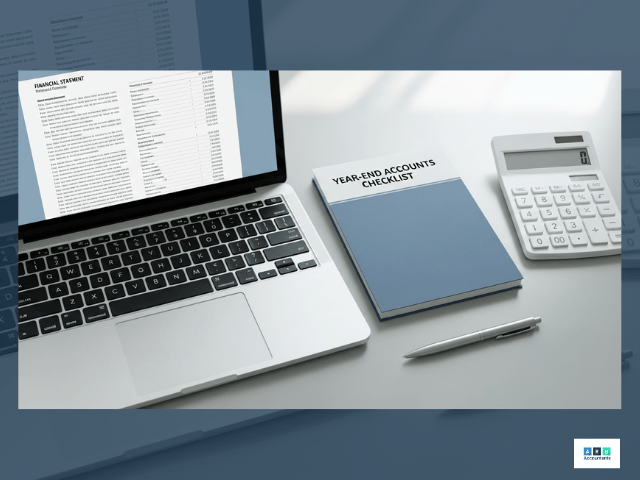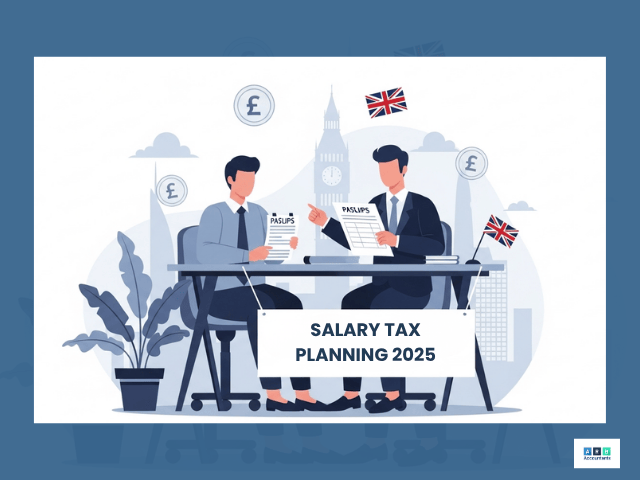
UK Personal Tax Allowance 2025/26: Key Changes & Guide
Navigating your personal tax allowance for 2025/26 can be confusing, especially with the cost of living still high and tax thresholds not keeping up. Many taxpayers are frustrated to find their take-home pay isn’t stretching as far, even though their income hasn’t increased significantly. The reason often lies in the freezing or changes to allowances and thresholds, which quietly pull more people into higher tax bands.
For the tax year 2025-26, understanding your personal allowance UK 2025 and how it fits into the wider system is key to making smart financial decisions. The standard personal allowance, the amount you can earn before paying income tax, is expected to remain at £12,570 under tax code 12570 (source).
But with allowances frozen and inflation rising, the value of your tax free allowance 2025 may feel reduced in real terms. In some cases, individuals with higher incomes will see their personal allowance reduced altogether.
It’s also important to understand the broader UK tax brackets and income tax thresholds 2025/26, which remain unchanged for now. That means more people may drift into higher UK tax bands, even without pay rises. Meanwhile, the marriage allowance 2025/26 and other reliefs can offer some relief, but only if claimed correctly.
At ARB Accountants, we break down the new tax rules UK 2025 and guide clients through the implications of tax code 2025-26 and other tax changes 2025/26, so you know exactly where you stand and how to plan ahead.
- What Is the Personal Tax Allowance for 2025/26 and Why Does It Matter?
- How the Personal Tax Allowance 2025/26 Affects Different Types of Taxpayers
- What Other UK Tax Reliefs Can You Claim Alongside the Personal Allowance in 2025/26?
- How Can You Make the Most of the Personal Savings Allowance in 2025/26?
- How Dividends Are Taxed Under the Income Tax Rates 2025/26
- What Are the Income Tax Thresholds for 2025/26?
- What Are the Best Tax Planning Tips to Maximise Your Tax-Free Allowance in 2025/26?
- How Can You Stay Updated on Personal Tax Allowance Changes in 2025/26?
- Frequently Asked Questions
What Is the Personal Tax Allowance for 2025/26 and Why Does It Matter?
What Does the Personal Tax Allowance Mean in the UK?
The personal tax allowance 2025/26 is the amount of income most individuals in the UK can earn before they start paying income tax. This threshold plays a crucial role in determining your overall tax liability for the tax year 2025-26. Understanding how it works can help you avoid unnecessary deductions and plan your finances more efficiently.
For the upcoming year, the standard personal allowance is expected to remain at £12,570, unchanged since the previous tax years. It means that the first £12,570 of your income will not be taxed. This allowance applies to most individuals with an income below £100,000, but starts to decrease once earnings exceed that amount, making it a personal allowance reduced scenario for higher earners.
The tax code 12570, which most employees will see on their payslips, directly reflects this standard allowance. It simply means that you’re entitled to a personal allowance in the UK for 2025 of £12,570. If you notice a different code, it could indicate changes in your circumstances or adjustments for benefits, underpayments, or other taxable income.
How Does the 2025/26 Personal Tax Allowance Compare With Previous Years?
When comparing the tax free allowance 2025 with previous years, it becomes clear that the allowance has been frozen since 2021. While the amount has stayed at £12,570, inflation and rising wages mean that more taxpayers are paying a higher percentage of their income in tax.
This freezing of the personal allowance UK 2025, alongside static income tax thresholds, highlights the impact of the tax code 2025–26 not keeping pace with economic realities. For many, what once felt like a reasonable buffer from taxation now feels inadequate.
At ARB Accountants, we help individuals and small businesses understand how these allowances affect their financial picture. Whether you’re navigating a changing tax code 12570, planning for the tax year 2025-26, or adjusting to the new tax rules UK 2025, we provide guidance to ensure you make the most of your personal tax allowance 2025/26.

With thresholds staying the same for 2025/26, everyone is affected. Inflation hits all of us whether you earn £50,000 or £100,000 because your personal allowance isn’t rising to match. But the real pinch is felt most by single-income households earning between £30,000 and £45,000, as every pound now has to stretch further for essentials like groceries, rent, and insurance.

How the Personal Tax Allowance 2025/26 Affects Different Types of Taxpayers
How Does It Impact Employees?
For employees under the PAYE (Pay As You Earn) system, the personal tax allowance 2025/26 plays a key role in determining how much of their salary is subject to income tax. The standard allowance remains frozen at £12,570, represented by the commonly used tax code 1257L. This means that employees earning below this threshold will pay no income tax, while earnings above it will be taxed according to the applicable income tax bands.
However, with wages rising and thresholds staying the same, more employees are being pulled into higher tax brackets, a phenomenon known as fiscal drag. Even modest salary increases can result in higher tax bills, despite no real increase in purchasing power. This is especially relevant for those nearing the higher-rate threshold, who may see a noticeable reduction in take-home pay under the new UK tax rules for 2025.
Employees earning over £100,000 will also continue to face a tapering of their personal allowance, losing £1 of it for every £2 earned above this threshold. By the time earnings reach £125,140, the personal allowance is fully withdrawn, resulting in a higher effective tax rate (source).
It’s also important for employees to check their tax codes for 2025/26 to ensure accuracy and avoid under- or overpayment of tax. In particular, couples should consider the Marriage Allowance, which allows a lower-earning spouse or civil partner to transfer up to £1,260 of their unused personal allowance to their partner, potentially reducing their household tax bill (source).
How Does It Impact Self-Employed Individuals?
For the self-employed, the personal tax allowance 2025/26 plays a crucial role during the self-assessment process. Like employees, they can earn up to the standard personal allowance tax-free, but they must calculate and report this themselves when submitting their tax returns.
The allowance reduces the portion of profits subject to income tax. However, the freezing of the personal allowance UK 2025, combined with static income tax thresholds, means that as business income grows—even modestly—more of it may fall into higher UK tax bands, increasing tax liability.
In the tax year 2025-26, self-employed individuals should be aware of the tax changes 2025/26 that may affect allowable expenses, National Insurance, or other thresholds. Effective tax planning can help optimise income, claim available reliefs (like marriage allowance 2025/26, if applicable), and ensure full benefit from the tax-free allowance 2025.
How Does It Impact Pensioners?
Pensioners are also impacted by the personal tax allowance 2025/26, especially those whose total income, including State Pension, private pensions, and any savings or investments, exceeds the standard personal allowance.
In such cases, any income above the £12,570 threshold becomes taxable according to the income tax rates 2025/26. With allowances and bands unchanged, more pensioners are gradually being pulled into the tax net, especially if their income includes rising annuity payments or savings interest.
Some pensioners may also see their personal allowance reduced if their overall income crosses specific thresholds. Additionally, if eligible, they can benefit from the marriage allowance 2025/26, which can be particularly useful when one partner has lower or no income.
At ARB Accountants, we work with employees, self-employed professionals, and retirees to ensure they understand how the personal allowance UK 2025 applies to them, and help them plan smartly for the tax year 2025-26 under the new tax rules UK 2025.
READ RELATED ARTICLE: Do I need to register for Self Assessment?
What Other UK Tax Reliefs Can You Claim Alongside the Personal Allowance in 2025/26?
Understanding the full picture of your personal tax allowance 2025/26 involves more than just knowing the tax-free limit. The UK tax system offers additional allowances and reliefs that can help reduce your overall tax liability if used correctly. These include the marriage allowance 2025/26, Blind Person’s Allowance, and the Personal Savings Allowance. Each of these interacts with your personal allowance UK 2025 and can significantly influence what you owe or save in the tax year 2025-26.
What Is the Marriage Allowance for 2025/26 and Who Can Claim It?
The marriage allowance 2025/26 allows eligible married couples and civil partners to transfer a portion of their standard personal allowance to their spouse or partner. If one person earns below the personal tax threshold and the other is a basic rate taxpayer, up to £1,260 of the unused allowance can be transferred, potentially saving up to £252 in income tax during the tax year 2025-26.
This relief is particularly valuable when one partner has little or no income and would otherwise not use their full tax free allowance 2025. However, eligibility is subject to conditions, including residency and income limits within the UK tax brackets. The transfer affects both partners’ tax code 12570, as HMRC adjusts codes to reflect the allowance split. At ARB, we ensure clients apply correctly and update their tax code 2025-26 to avoid errors.
What Is the Blind Person’s Allowance and How Does It Work?
The Blind Person’s Allowance is an additional amount added to your personal tax allowance 2025/26 if you’re registered blind or severely sight impaired. For the 2025/26 tax year, it is expected to remain at £3,130, which is added on top of the standard personal allowance, bringing the total allowance to £15,700 for eligible individuals (source).
This allowance can also be transferred to a spouse or civil partner if it’s not fully used, offering similar flexibility as the marriage allowance 2025/26. It helps reduce tax pressure on those who may have additional living costs due to visual impairments.
It’s important to note that being partially sighted alone doesn’t automatically qualify someone; registration with the local authority is often required. At ARB Accountants, we help clients understand their eligibility and ensure it’s reflected accurately in their tax code in 2025-26.
How Does the Personal Savings Allowance Apply in 2025/26?
For many people, especially pensioners or those with modest investment income, the Personal Savings Allowance offers an important exemption on savings interest. Basic rate taxpayers can earn up to £1,000 in interest tax-free, while higher rate taxpayers can earn up to £500. Additional rate taxpayers do not qualify (source).
This allowance operates alongside the personal tax allowance 2025/26, meaning savings interest is taxed only after your full personal allowance has been used. However, when your income pushes you into higher UK tax brackets, your allowance is reduced, affecting how much interest remains tax-free.
Understanding how this interacts with your personal allowance UK 2025, especially if it’s been reduced, is key to avoiding unexpected tax bills. Under the new tax rules UK 2025, static thresholds mean more people may lose out if they don’t review their income structure and tax planning.

One of the biggest mistakes I see is when people have two jobs but don’t tell HMRC to apply their personal allowance to the higher-paying one. That can mean paying 20% basic rate tax unnecessarily. Another is ignoring your tax code, if it’s wrong, you could be overpaying for months. And don’t forget P11D benefits, things like company cars or private health insurance. If your circumstances change and you don’t update HMRC, you might be taxed for perks you no longer receive.

How Can You Make the Most of the Personal Savings Allowance in 2025/26?
The Personal Savings Allowance 2025/26 determines how much interest income you can earn tax-free. It is designed to reduce the tax burden on those who save in bank accounts, building societies, or similar UK financial products.
- Basic rate taxpayers can earn up to £1,000 in interest tax-free.
- Higher rate taxpayers are allowed up to £500 tax-free interest.
- Additional rate taxpayers do not qualify for this allowance.
This allowance works alongside your personal tax allowance 2025/26. If your total income pushes you into higher UK tax brackets, the amount of tax-free savings you enjoy may be reduced.
Planning tips:
- Use tax-efficient accounts such as ISAs to maximise interest free from tax.
- Spread savings across multiple account types to fully utilise your allowance.
Keep an eye on income changes that could shift you into higher rate thresholds, affecting your personal savings allowance 2025/26.
How Dividends Are Taxed Under the Income Tax Rates 2025/26
If you receive income from shares, understanding how dividends are taxed in the tax year 2025-26 is essential, especially about your personal tax allowance 2025/26. Many business owners, investors, and company directors rely on dividend income, but tax rules around it have become stricter in recent years. Staying informed about the new tax rules UK 2025 will help you avoid paying more than necessary and plan your finances wisely.
What Do You Need to Know About Dividend Tax Under the 2025/26 Tax Rates?
In the 2025/26 tax year, the dividend tax landscape continues to reflect recent government changes aimed at increasing tax revenue from investments. The tax free dividend allowance, the amount of dividend income you can earn without paying tax, was reduced to £500 in the 2024/25 tax year and is expected to remain at that level. This is separate from your personal tax allowance 2025/26, but the two work together when calculating your total tax liability.
Once your dividend income exceeds the £500 threshold, it’s taxed at the following rates based on your total income and how it falls within the UK tax brackets (source):
- 8.75% for basic rate taxpayers
- 33.75% for higher rate taxpayers
- 39.35% for additional rate taxpayers
Your total income, including salary, pension, and dividends, is used to determine your position within the UK tax bands. Therefore, even modest dividend income can push you into a higher band, particularly under the tax changes 2025/26, where thresholds remain frozen.

If you’re close to tipping into the higher rate band, charitable donations or personal pension contributions can be a smart move. For example, a £1,000 pension payment can extend your basic rate band by £1,250, potentially saving you 20% tax. It’s about using every legal tool available to keep more of your income working for you.

How Does Dividend Income Affect Your Personal Allowance in the UK for 2025/26?
Dividend income also affects your personal allowance UK 2025 in more indirect ways. If your total income (including dividends) exceeds £100,000, your standard personal allowance begins to reduce by £1 for every £2 over the threshold.
This tapering means that by the time your income reaches £125,140, your personal allowance is reduced to zero, potentially increasing your effective tax rate significantly.
For individuals with a combination of salary and dividends, this interaction between income types and the personal tax allowance 2025/26 can be complex. The tax code 12570 may no longer apply in its standard form, and the HMRC may issue a new tax code 2025-26 to reflect your reduced allowance or different income sources.
At ARB Accountants, we help business owners and investors understand how dividend income impacts their tax position. We look beyond just the numbers, making sure you use all available reliefs, such as the marriage allowance 2025/26 if eligible, and advise on how to structure your income tax-efficiently under the new tax rules UK 2025.
Understanding how your dividends interact with your personal tax allowance 2025/26 is key to avoiding surprise tax bills and making the most of your earnings.
What Are the Income Tax Thresholds for 2025/26?
Understanding the income tax thresholds 2025/26 is key to planning your finances effectively. These thresholds determine which portion of your income is taxed at the basic, higher, or additional rate.
- Basic rate tax threshold 2025/26: Income from £12,571 to £50,270 is taxed at 20%.
- Higher rate tax threshold 2025/26: Income from £50,271 to £125,140 is taxed at 40%.
- Additional rate tax threshold 2025/26: Income above £125,140 is taxed at 45%.
The thresholds interact directly with your personal allowance UK 2025/26. For example, if your income exceeds £100,000, your personal allowance is reduced gradually, effectively increasing the rate you pay on part of your income.
Tips to manage thresholds effectively:
- Consider income timing, like deferring bonuses, to avoid crossing higher thresholds.
- Split income with a spouse if possible, utilising the marriage allowance 2025/26.
- Track all income sources, including dividends and interest, to anticipate which tax band you will fall into.
What Are the Best Tax Planning Tips to Maximise Your Tax-Free Allowance in 2025/26?
Making the most of your personal tax allowance 2025/26 isn’t just about knowing the numbers. It’s about using them wisely. Whether you’re an employee, business owner, or retiree, understanding how to legally reduce your tax bill and avoid common mistakes can help you retain more of your income in the tax year 2025-26. Let’s explore some practical strategies and key compliance tips to stay ahead of the curve under the new tax rules UK 2025.
How Can You Maximise the Benefits of Your Allowances?
One of the simplest ways to reduce your tax liability is to fully utilise your tax free allowance 2025. This includes the standard personal allowance of £12,570 and any additional reliefs or exemptions you’re eligible for.
For married couples or civil partners, the marriage allowance 2025/26 is often underused. If one partner earns less than the personal allowance UK 2025, they can transfer a portion of it to their partner, potentially saving up to £252 in tax.
Other options include adjusting the timing of income, using tax-efficient savings accounts (like ISAs), and spreading income between spouses to avoid crossing into higher UK tax brackets. Planning dividend withdrawals or pension drawdowns strategically can also help you stay within the most favourable bands for both income and savings.
At ARB Accountants, we help clients map their income across the year so that their personal tax allowance 2025/26 is used efficiently without triggering unnecessary liabilities.
What Common Mistakes Should You Avoid With Tax Allowances?
A frequent mistake is assuming that tax codes are always accurate. If your situation changes, such as receiving additional income, benefits, or making use of the marriage allowance 2025/26, you should review your tax code 12570. An outdated or incorrect tax code 2025-26 could mean you’re overpaying or underpaying tax, leading to unpleasant surprises later.
Another common oversight is ignoring the frozen UK tax bands 2025/26. As income rises (even slightly), more people are pushed into higher tax brackets without any change to allowances. This makes it critical to monitor your total earnings, including dividends, bonuses, and pensions, and how they interact with the personal allowance reduced rule if you cross the £100,000 income threshold.
Failing to factor in the tax changes 2025/26 can also lead to missed opportunities or increased tax bills. For example, many assume that the tax free allowance in 2025 automatically applies to all income types, which isn’t the case with dividends or savings interest.
How Can You Stay Compliant With UK Tax Legislation?
Beyond planning, it’s essential to stay compliant with evolving UK tax laws. The tax year 2025-26 brings continued enforcement of the government’s policy to freeze thresholds and allow inflation to quietly raise revenue. Ensuring your returns are accurate, timely, and aligned with the new tax rules UK 2025 will help you avoid penalties.
ARB Accountants can help you stay up to date with your obligations and prepare in advance, so your personal tax allowance 2025/26 works in your favour, not against you.
READ RELATED ARTICLE: How likely are you to be investigated by HMRC?
How Can You Stay Updated on Personal Tax Allowance Changes in 2025/26?
With ongoing changes to the UK tax system, staying updated on your personal tax allowance, income tax rates and related reliefs like the marriage allowance in 2025/26 is essential. What seems straightforward one year can shift due to government policy, budget announcements, or inflation-related freezes that impact how much tax you pay.
For example, while the standard personal allowance is expected to remain at £12,570, future adjustments to thresholds or the tapering of allowances for higher earners could significantly alter your liability. Similarly, frozen UK tax brackets and unchanged thresholds may cause more individuals to unknowingly fall into higher tax bands, a trend expected to continue under the new tax rules UK 2025.
Keeping an eye on updates to the tax code 2025-26, especially if you have multiple income sources or are changing employment status, will help ensure your taxes remain accurate and compliant. Failing to notice updates can lead to underpayments, overpayments, or missed opportunities to claim reliefs like the marriage allowance.
To stay informed, regularly check official resources such as:
- HMRC’s official website (gov.uk)
- Budget announcements from the Chancellor
At ARB, our Essex accountants monitor every change affecting the tax year 2025-26 and help our clients adapt early, ensuring their personal tax allowance 2025/26 and other entitlements are used efficiently. When it comes to taxes, being proactive is always better than reacting after the deadline.






